Why You Should Build a Second Storey Addition Near Western Sydney International Airport
Why You Should Build a Second Storey Addition Near Western Sydney International Airport
As Western Sydney prepares for the grand opening of its new international airport, the region is undergoing rapid transformation. Property values in the surrounding areas are expected to soar, creating an ideal opportunity for homeowners to capitalise on this property boom. If your home is located near Western Sydney International Airport (WSI), building a second storey addition could be a strategic way to increase your property’s value and maximise your investment.
The Impact of Western Sydney International Airport on Property Values
The development of Western Sydney International Airport is a game-changer for the local economy, with thousands of new jobs and infrastructure upgrades already underway. According to the WSI video, the airport is expected to bring a surge in demand for housing in the surrounding suburbs, as new workers and businesses move into the area.
For homeowners in Western Sydney, this property boom presents a unique opportunity. Property values in suburbs near the airport, such as Penrith, Liverpool, Narellan and Camden, are predicted to rise sharply as the airport approaches its opening in 2026. By adding a second storey to your home now, you can position your property to take full advantage of this growth.
The Benefits of Building a Second Storey Addition
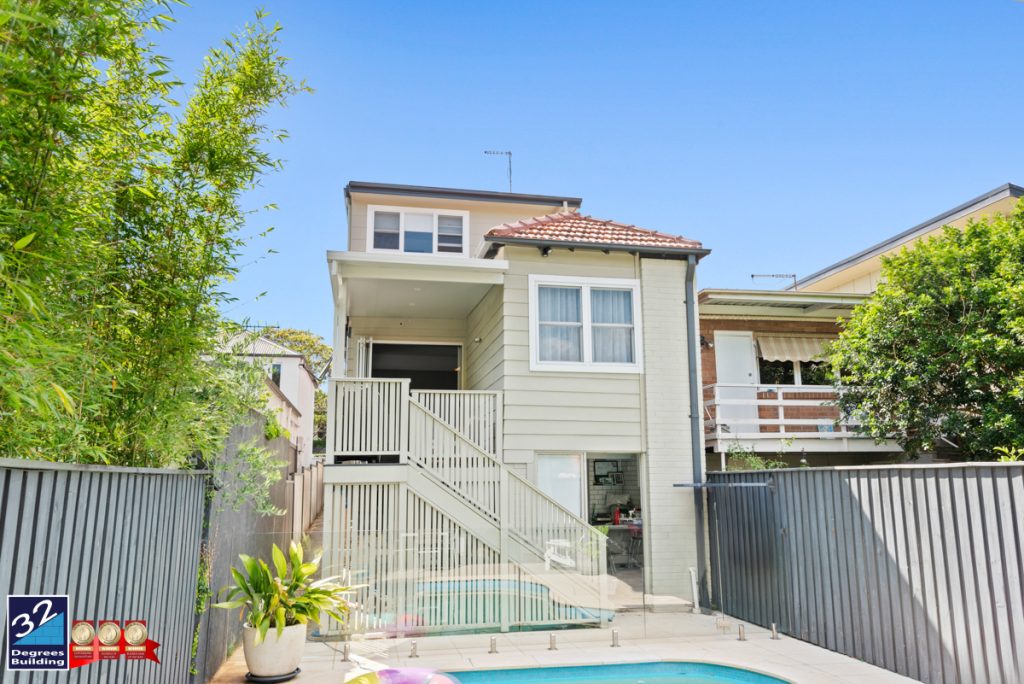
Building a second storey addition is an excellent way to add space, functionality, and value to your home. Here’s why it’s a smart move if you live near the upcoming Western Sydney International Airport:
- Maximise Your Home’s Potential
With the increased demand for housing near the airport, properties that offer more space will be highly desirable. A second storey addition gives you the chance to increase the square meterage of your home without needing to sacrifice any of your yard space. More space means more appeal to buyers or renters in the future. - Increased Property Value
A larger home with more bedrooms, bathrooms, and living areas is naturally worth more on the property market. As property prices rise in the region due to the airport development, expanding your home now could result in a significant return on investment when it comes time to sell. - Improved Views and Lifestyle
A second storey can offer enhanced views of the surrounding area, particularly if your home is in an elevated location. You’ll not only improve your home’s marketability, but you can also enjoy the lifestyle benefits that come with more space, such as a quiet retreat or additional entertaining areas. - Stay in Your Preferred Location
Many families are reluctant to leave their local area, especially if they have strong connections to the community or nearby schools and services. Rather than moving to a larger home, building a second storey lets you stay where you love while gaining the extra space you need.
Why Now is the Perfect Time to Build
With the Western Sydney International Airport scheduled to open in 2026, there’s a limited window to take advantage of the property market before prices peak. Building a second storey now allows you to capitalise on the current market conditions while also preparing for the inevitable rise in property values as the airport nears completion.
The increased infrastructure, including improved transport links and new amenities, is set to make Western Sydney a highly sought-after place to live and work. By expanding your home now, you’ll be ready to benefit from the influx of interest in the area in the coming years.
Considerations for a Second Storey Addition
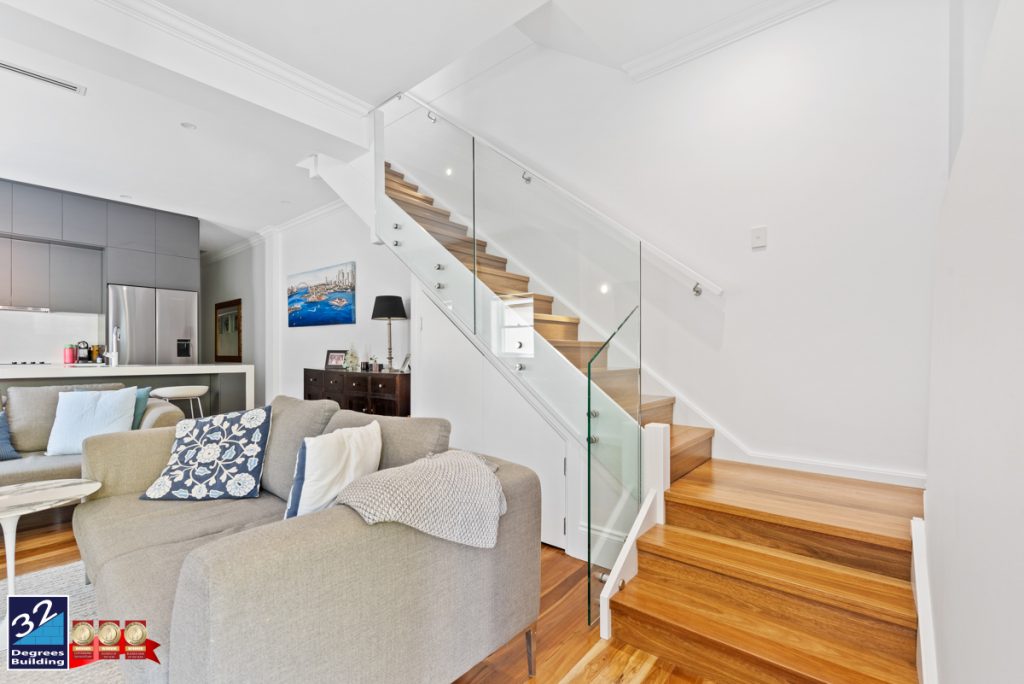
When planning a second storey addition, it’s important to work with a builder who has experience in these types of projects. A well-designed second storey will seamlessly integrate with your existing home, maintaining both the aesthetic and structural integrity of the building.
At 32 Degrees Building, we specialise in high-quality second storey additions that are tailored to meet the unique needs of each homeowner. Our team will guide you through the entire process, from initial design through to final construction, ensuring minimal disruption to your daily life.
How a Second Storey Can Increase Your ROI
For homeowners, the decision to build a second storey addition is often about the potential return on investment (ROI). With Western Sydney on the verge of a property boom, the ROI on a second storey addition is likely to be substantial. Here’s how:
- Increased Sale Price: A larger, more modern home will command a higher price when it comes time to sell. With the increased demand for housing near the airport, your property will stand out in a competitive market.
- Higher Rental Income: If you’re considering renting out your home, a second storey can increase the rental yield by allowing for additional tenants or creating separate living areas that can be leased independently.
- Future-Proofing Your Investment: As the airport brings more jobs and economic activity to the region, property prices are set to continue rising. Building now ensures that your home is positioned to benefit from this long-term growth.
Lifestyle Benefits of a Second Storey Addition
In addition to the financial benefits, a second storey addition offers lifestyle enhancements that can improve your quality of life. Whether you need more space for a growing family, want to create a dedicated home office, or simply want to enjoy more privacy, a second storey can transform your home in ways that enhance your day-to-day living.
With the flexibility to design new bedrooms, bathrooms, and living spaces, you can customise the layout to suit your needs and future-proof your home for whatever life brings next. And because you’re building up rather than out, you retain your backyard space for entertaining, gardening, or family activities.
Why Choose 32 Degrees Building?
At 32 Degrees Building, we’re proud to be one of Sydney’s leading builders specialising in second storey additions. Our team of experienced professionals works closely with homeowners to deliver seamless, high-quality results that blend perfectly with your existing home.
We understand that building a second storey is a major investment, and we’re committed to providing the highest level of craftsmanship and customer service to ensure your project runs smoothly from start to finish.
With Western Sydney on the cusp of a property boom, now is the perfect time to invest in a second storey addition. Let 32 Degrees Building help you make the most of your home’s potential, so you can enjoy the benefits for years to come.
Final Thoughts: Don’t Miss Out on the Western Sydney Property Boom
The development of Western Sydney International Airport is set to bring unprecedented growth to the region. As property values continue to rise, building a second storey addition is a strategic way to capitalise on this once-in-a-lifetime opportunity.
If your property is located near the airport, now is the time to act. Expanding your home will not only increase its value but also ensure that you’re well-positioned to take advantage of the property boom that’s already underway.
Contact 32 Degrees Building today to find out how we can help you build the second storey addition that will maximise your investment and enhance your lifestyle.
FAQs
- How will Western Sydney International Airport affect my property value?
The airport is expected to significantly increase property demand in the surrounding areas, leading to a rise in property values. - How long does it take to build a second storey addition?
The timeline can vary depending on the complexity of the project, but typically, it can take anywhere from a few months to complete. - Will a second storey addition increase my home’s value?
Yes, expanding your home’s square footage and adding new living spaces will make your property more valuable, particularly in areas near the airport where demand is set to increase. - Is it better to build now or wait?
Building now allows you to capitalise on current construction costs before they rise with increased demand. Additionally, you’ll be ready to benefit from property value increases as the airport nears completion. - Can I live in my home during the build?
In many cases, you can remain in your home while the second storey addition is being built. We work to minimise disruption and ensure your comfort during the process. - What are the benefits of choosing 32 Degrees Building?
We specialise in second storey additions, offering expert craftsmanship, personalised service, and a seamless process from start to finish.
Exploring the Benefits of 32 Degrees Building and Smart Home Additions
32 Degrees Building
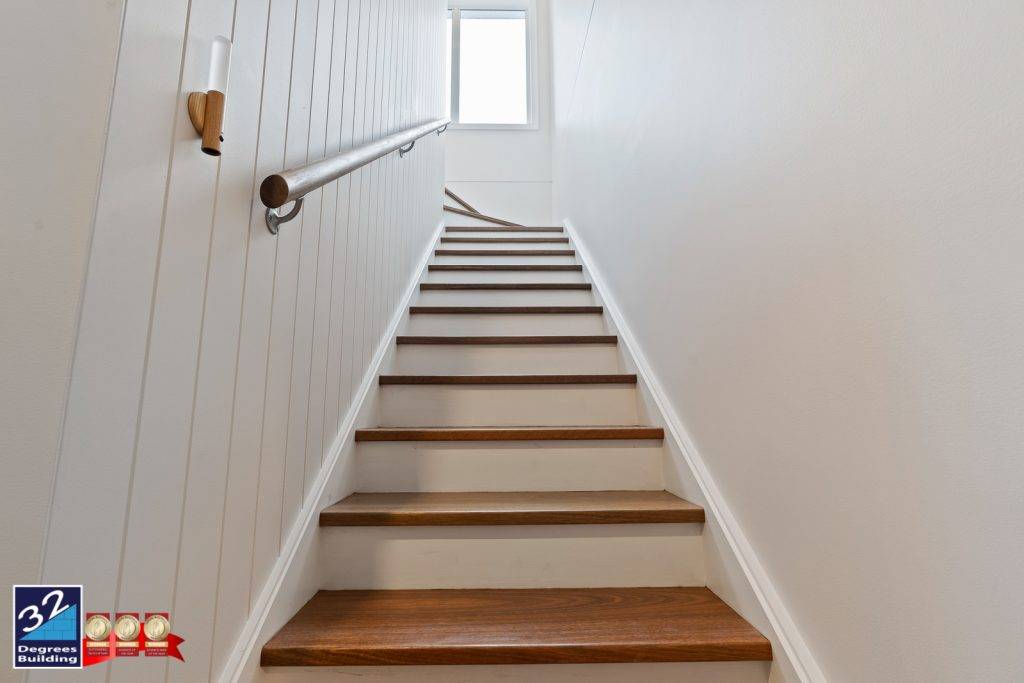
32 Degrees Building offers a comprehensive range of services for homeowners looking to expand or renovate their homes. Their standout feature is the collaborative and flexible approach to design control, allowing clients to have a significant say in aspects like room sizing, window placement, and the dimensions of wet areas. This collaborative process ensures that each project is tailored to the specific needs and preferences of the client, providing a truly custom solution.
Experience and Versatility: 32 Degrees Building has extensive experience in constructing in challenging areas, including those affected by bushfires (BAL-FZ) and inner-city locations where logistics and neighbour considerations are crucial. This expertise makes them a versatile choice for a wide range of projects.
Comprehensive Services: In addition to second storey additions, they offer ground floor extensions and renovations, making them a one-stop-shop for major home improvement projects. Their readiness with plans and approvals streamlines the process, reducing the waiting time for clients eager to start their projects.
Client Portal: Both companies provide a client portal for tracking build schedules, confirming selections, and maintaining communication. This ensures transparency and keeps clients informed and involved throughout the project.
Smart Home Additions (SHA)
Smart Home Additions (SHA) specialises in providing cost-effective solutions for second storey additions, with a focus on minimising construction costs and material waste. Their approach to design control is more structured, with the design being primarily handled by their team to ensure efficiency and budget-friendly outcomes.
Budget-Friendly Design: SHA’s design philosophy reduces the need for expensive materials like steel beams and focuses on limiting waste. This makes them an excellent choice for homeowners who are budget-conscious but still need additional space.
Focus on Second Storey Additions: While SHA does not offer ground floor extensions or extensive renovations, they excel in second storey additions. Their streamlined design process ensures that additions are compatible with existing home structures and adhere to the builder’s style, ensuring a smooth and cohesive build.
Client Portal: Like 32 Degrees Building, SHA offers a client portal to keep clients updated on their build schedule and selections, enhancing communication and transparency.
The Need for SHA and Cost-Effective Alternatives
In today’s housing market, finding cost-effective solutions for expanding living space is crucial. SHA provides an affordable option for those needing a second storey addition without the extensive costs associated with custom designs. Their approach is ideal for homeowners who are more flexible with design choices and prioritise cost savings.
Owner’s Expertise: The owner of 32 Degrees Building has years of experience in the construction industry, focusing on optimising design and building processes to save clients money. Their expertise enabled the creation of Smart Home Additions (SHA) to offer competitive pricing without compromising on quality or structural integrity.
Target Market: SHA’s services cater to homeowners who need additional space but are working within a tight budget. Their streamlined design process and efficient building practices ensure that clients get the most value for their money.
Comparison with 32 Degrees Building: While 32 Degrees Building offers a more flexible and custom approach, SHA stands out for its affordability and efficiency. Homeowners can choose based on their priorities: customisability and comprehensive services with 32 Degrees Building, or cost-effective, streamlined second storey additions with SHA.
Conclusion: Both companies provide valuable services with distinct advantages. Whether you need the flexibility and comprehensive solutions offered by 32 Degrees Building or the cost-effective, efficient second storey additions from SHA, you have options to suit your specific needs and budget.
FAQs
What are the main differences between 32 Degrees Building and Smart Home Additions?
32 Degrees Building offers more flexible and custom design control, including ground floor extensions and renovations. SHA focuses on cost-effective second storey additions with a streamlined design process handled by their team.
Can both companies handle projects in bushfire or flood-affected areas?
No, only 32 Degrees Building has experience and capabilities to handle projects in bushfire or flood-affected areas.
Do both companies provide a client portal for tracking the build?
Yes, both 32 Degrees Building and Smart Home Additions offer a client portal to keep clients informed about their build schedule, selections, and to maintain communication.
Which company is more suitable for a budget-conscious homeowner?
Smart Home Additions is more suitable for budget-conscious homeowners looking for cost-effective second storey additions with minimal design control.
Can 32 Degrees Building handle inner-city projects with logistical challenges?
Yes, 32 Degrees Building has experience with inner-city projects, managing logistics and neighbour considerations effectively.
What kind of design control does Smart Home Additions offer?
Smart Home Additions provides limited design control, focusing on reducing costs and material waste, with the design being primarily managed by their team.
Adding a Second Storey to Your House: A Comprehensive Guide
Are you looking to add more space to your home without sacrificing your backyard? Adding a second storey to your house is a fantastic way to achieve this. At 32 Degrees Building, we specialise in transforming homes with our award-winning building services. In this blog post, we’ll delve into the benefits, considerations, and process of adding a second storey to your home. We’ll also address frequently asked questions and specify the areas we do not service.
Why Add a Second Storey?
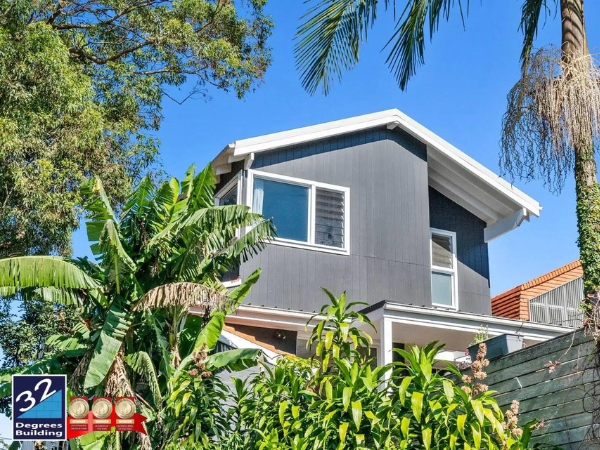
Maximise Space Without Losing Land
One of the primary reasons homeowners opt for a second storey addition is to increase living space without reducing their garden or outdoor area. This is particularly beneficial in suburban areas where land is at a premium.
Increase Property Value
A well-executed second storey can significantly boost your property’s value. It adds more bedrooms, bathrooms, and living spaces, making your home more attractive to potential buyers.
Customise Your Living Space
Adding a second storey allows you to design the new space exactly to your needs. Whether it’s additional bedrooms, a home office, or a master suite with a view, the possibilities are endless.
Considerations Before Adding a Second Storey
Structural Integrity
Before embarking on a second storey addition, it’s crucial to assess whether your home’s existing structure can support the extra weight. This typically involves consulting with a builder and/or engineer. Generally if you’re on a slab it’s good to go, however, if you’re on bearers and joists with brick piers then there may be additional structural work required which is addressed during the planning stages with the engineer.
Design and Planning
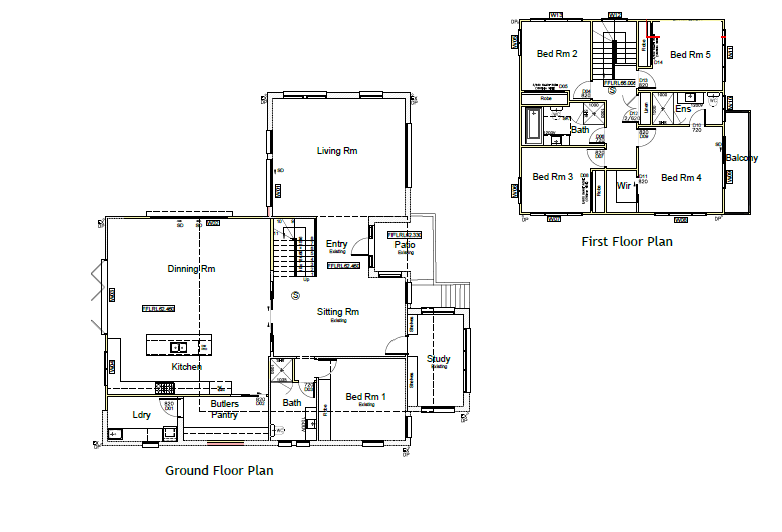
A second storey addition requires careful planning to ensure it integrates seamlessly with the existing structure. This includes architectural design, obtaining necessary council approvals, and planning the construction phases to minimise disruption. We can assist with the whole process and make it easy for you.
Budget and Costs
Adding a second storey is a significant investment. It’s essential to have a clear understanding of the costs involved, including design, materials, labour, and any additional expenses such as temporary accommodation if you need to move out during construction.
The 32 Degrees Building Process
Consultation and Design
We start with a thorough consultation to understand your needs and vision. Our experienced builder will then create detailed plans that align with your budget and preferences.
Approvals and Permits
Our team handles all the necessary council approvals and permits, ensuring your project complies with local regulations.
Construction
Our skilled builders work efficiently to complete your second storey addition with minimal disruption to your daily life. We pride ourselves on maintaining a clean and safe worksite.
Completion and Handover
Once construction is complete, we conduct a final inspection to ensure everything meets our high standards. We then hand over the keys to your newly transformed home.
FAQ
Q: How long does it take to add a second storey to a house?
A: The timeline can vary depending on the complexity of the project, but on average, it takes between 4 to 12 months from consultation to completion.
Q: Will I need to move out during construction?
A: This depends on the extent of the work and your personal preference. In some cases, it may be possible to stay in your home, but for extensive renovations, temporary accommodation might be necessary.
Q: How much does it cost to add a second storey?
A: Costs can vary widely based on the size and complexity of the addition. Download our packages for current pricing guides.
Q: Do I need council approval for a second storey addition?
A: Yes, an approval is required for a second storey addition and any external structural design changes proposed to your home. Our team will handle all the necessary paperwork and approvals on your behalf.
Areas We Do Not Service
While 32 Degrees Building provides comprehensive building services across many regions, there are areas we do not service. Our head office in Smeaton Grange allows us to efficiently serve South West & Western Sydney, the Illawarra, the Southern Highlands, the Eastern Suburbs, the North West, the North, the Inner West, and the Sutherland Shire.
Adding a second storey to your house can be a game-changer, providing the extra space you need while enhancing your property’s value. At 32 Degrees Building, we’re committed to delivering high-quality, all-inclusive building services to bring your vision to life. Contact us today to start your journey towards a bigger, better home.
For more information or to schedule a consultation, visit 32 Degrees Building.
Building Up or Extending Out: Cost-Effective Solutions
In this article, we’ll discuss the pros and cons of both second storey additions and ground floor extensions to help you determine which option is the most affordable for your unique situation. We’ll also touch on aspects such as the return on investment, disruption during construction, and the long-term benefits of each option to give you a comprehensive understanding of what to expect.
Second Storey Additions
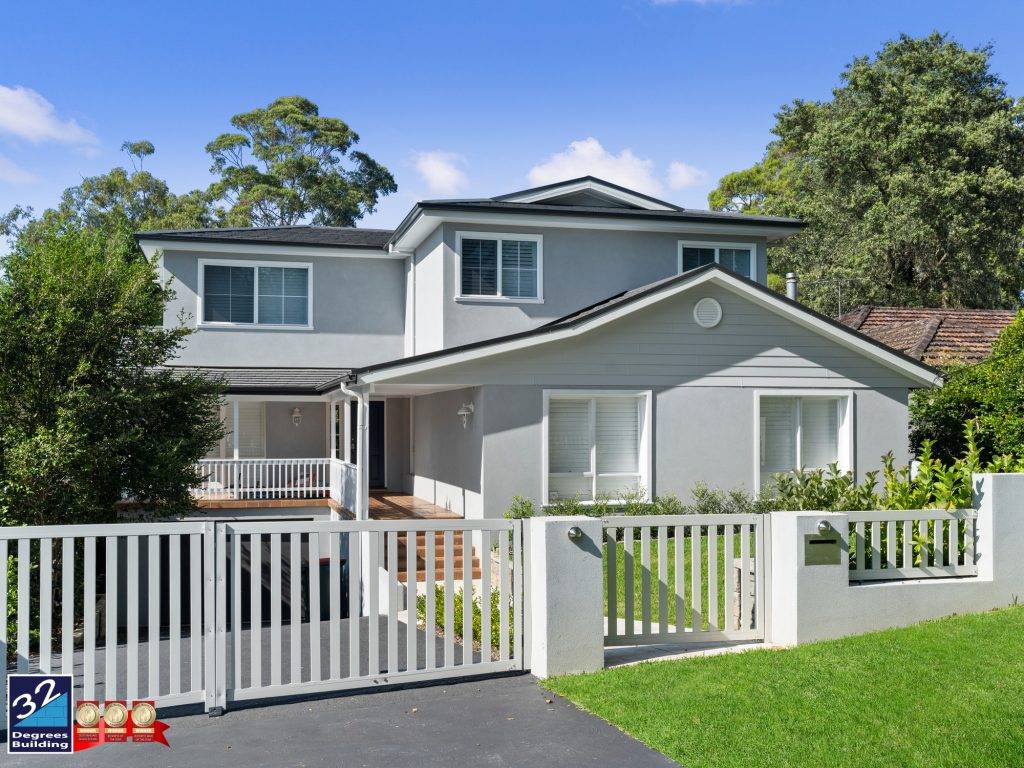
Second storey additions involve building an additional level on top of your existing home. This type of extension is popular in urban and suburban areas where land space is limited. Here are some of the factors to consider when deciding if a second storey addition is the most cost-effective option for you.
Pros of Second Storey Additions
- Maximises Land Space: If you have a small backyard or limited land space, a second storey addition is an excellent way to add more living space without sacrificing outdoor areas. It allows you to retain garden space, which can be especially valuable if you enjoy outdoor entertaining or if children or pets need room to play.
- Less Disruption: Since the work is primarily done above the ground floor, second storey additions can be less disruptive to your daily life than ground floor extensions. You can continue living in your home during the construction process, which can save you the cost and inconvenience of temporary relocation.
- More Affordable than Moving: If you love your current location and don’t want to uproot your family, a second storey addition is a more cost-effective option than moving to a larger home. Moving involves expenses like real estate commissions, moving costs, and potential renovations in a new home, which you can avoid by extending your current property.
- Potential for Better Views: By extending upwards, you may be able to take advantage of better views that were previously blocked by other buildings or trees. The elevated position can also offer increased privacy, as it is harder for passersby to see into second-floor windows.
- Confidence in a Fixed Cost: Building a second storey addition on top of your existing home is a more cost effective solution and as there aren’t any unknown costs as there is no ground floor works (eg. soil removal/excavation unknowns) it gives you the confidence of knowing your build cost – is your build cost.
Cons of Second Storey Additions
- Structural Constraints: Building a second storey addition requires careful consideration of the structural integrity of your home. If your home was built on steel frames, then it may not support a second storey addition or, you may need to reinforce the existing structure, which can significantly add to the overall cost.
- Limited Floor Plan Options: When extending upwards, the floor plan of your new level will be restricted by the layout of the existing floor below. This can limit your design options.
- Potential for Disrupting Neighbours: If you live in close proximity to your neighbours, a second storey addition may cause disruptions and inconvenience to them, leading to potential complaints and delays. Construction noise, dust, and the presence of construction equipment can all affect neighbour relations.
- Height Restrictions and Permits: Depending on your local council or municipality, there may be height restrictions that limit how high you can build. Obtaining the necessary permits for a second storey addition can be more complex and time-consuming than for ground floor extensions.
Ground Floor Extensions
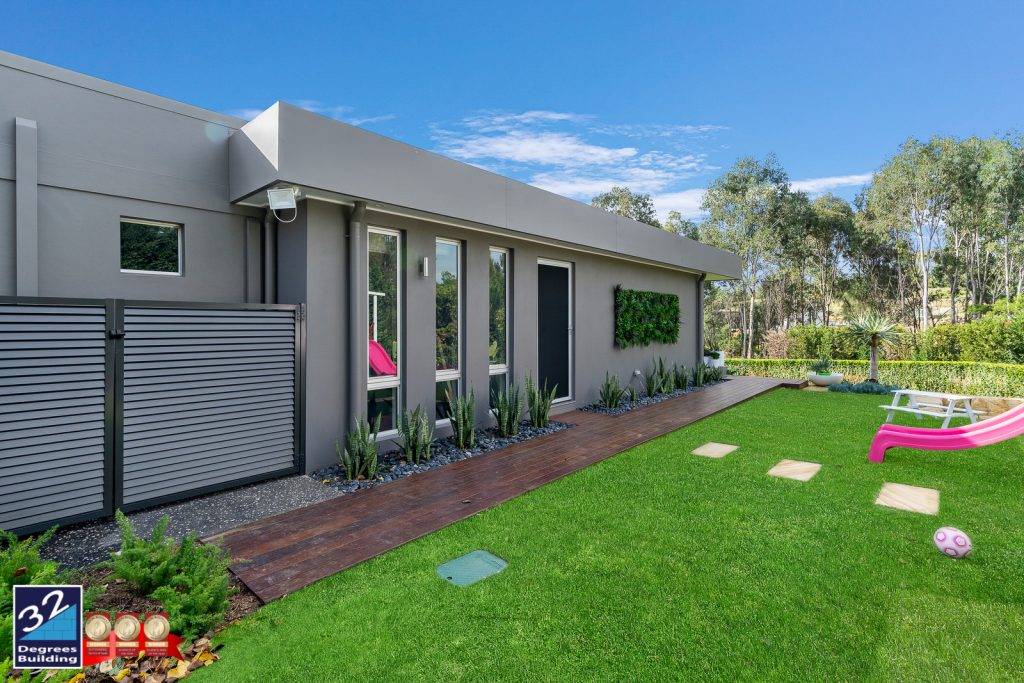
Ground floor extensions involve building outwards from your existing home. This type of extension is popular in suburban and rural areas, where land space is more readily available. Here are the pros and cons to consider when determining if a ground floor extension is the most cost-effective option for you.
Pros of Ground Floor Extensions
- Unlimited Floor Plan Options: With a ground floor extension, you have more flexibility with your floor plan since you’re not constrained by an existing structure. You can create an entirely new space that suits your needs and budget. This also allows for the addition of modern features such as open plan living areas, large windows, and bi-fold doors that open to the garden.
- Easier to Obtain Permits: In some areas, obtaining permits for a ground floor extension may be easier and less expensive than for a second storey addition. This can be due to fewer concerns about privacy and overshadowing of neighbouring properties.
- Better for Aging in Place: If you plan to live in your home as you age, a ground floor extension can provide you with a more accessible living space on one level. This is particularly beneficial for those with mobility issues or for those planning to age in place without the need for stairs.
Cons of Ground Floor Extensions
- More Disruption: Ground floor extensions can be more disruptive to your daily life since the work is being done at ground level. You may need to make alternate living arrangements during construction, which can add stress and additional costs.
- Less Yard Space: Since ground floor extensions take up more space on your property, you may have to sacrifice some outdoor areas or landscaping. This can impact your outdoor living space and may require a redesign of your garden or outdoor entertainment areas.
- More Costly: In general, ground floor extensions tend to be more expensive than second storey additions since they require more materials and labor. Foundation work can be particularly costly, especially if the ground conditions are challenging or if extensive excavation is required and some of the costs here can be unknown until construction has commenced.
- Zoning and Setback Requirements: Local zoning laws may dictate how close you can build to property lines, which can limit the size and shape of your ground floor extension. Setback requirements can significantly impact the design and feasibility of your project.
How to Determine the Most Cost-Effective Option for Your Home

When deciding whether to extend up or out, it’s essential to consider your specific circumstances and budget. Here are some factors to consider when determining the most cost-effective option for your home.
- Existing Structure: If your home is already structurally sound and can support a second storey addition, this may be the most cost-effective option. However, if you need to reinforce the existing structure, the cost of a ground floor extension may be more affordable.
- Local Building Regulations: Before deciding on a second storey addition or ground floor extension, it’s crucial to research local building regulations. Some areas may have restrictions on the height of the home or the percentage of the lot that can be built on. Compliance with these regulations can influence both the feasibility and the cost of your project.
- Size of Your Current Home: If you have a smaller home, you may get more value for your money by adding a second storey. However, if you have a larger home, a ground floor extension may be the more affordable option. The size and layout of your current home can also affect how easily it can be extended in either direction.
- Your Budget: Ultimately, your budget will play a significant role in determining whether a second storey addition or ground floor extension is the most cost-effective option for you. Consider the cost of materials, labor, and permits when making your decision. It’s also wise to include a contingency fund for unforeseen expenses that may arise during the construction process.
Other Factors to Consider
When deciding whether to extend up or out, there are some other factors to consider, besides cost. These include:
- Timeframe: If you need additional living space quickly, a ground floor extension may be the better option. Second storey additions tend to take longer to complete due to the complexity of building upwards and ensuring the existing structure can support the addition.
- Resale Value: While both second storey additions and ground floor extensions can add value to your home, it’s essential to consider which option will provide the most return on your investment. Think about the trends in your local real estate market and how future buyers might view the added space.
- Lifestyle Considerations: Your family’s lifestyle should also be a factor in the decision-making process. If you have young children or plan to grow your family, the layout and accessibility of the new space will be important. Likewise, if you entertain frequently, the flow between indoor and outdoor areas may influence your choice.
- Energy Efficiency: Extending your home provides an opportunity to improve its energy efficiency. Consider the orientation of the new addition, the potential for natural light and ventilation, and the type of insulation and windows you will use. These can all have long-term impacts on your energy costs and comfort levels.
Conclusion
When it comes to adding more living space to your home, there is no one-size-fits-all solution. The most cost-effective option for you will depend on your budget, the size and layout of your current home, and local building regulations. Consider all of these factors before making your decision, and consult with a professional builder or architect to help you determine the best option for your unique situation. With careful planning and consideration, you can successfully extend your home and create the extra space your family needs.
NEW PRODUCT: Weathertex Weathergroove Fusion
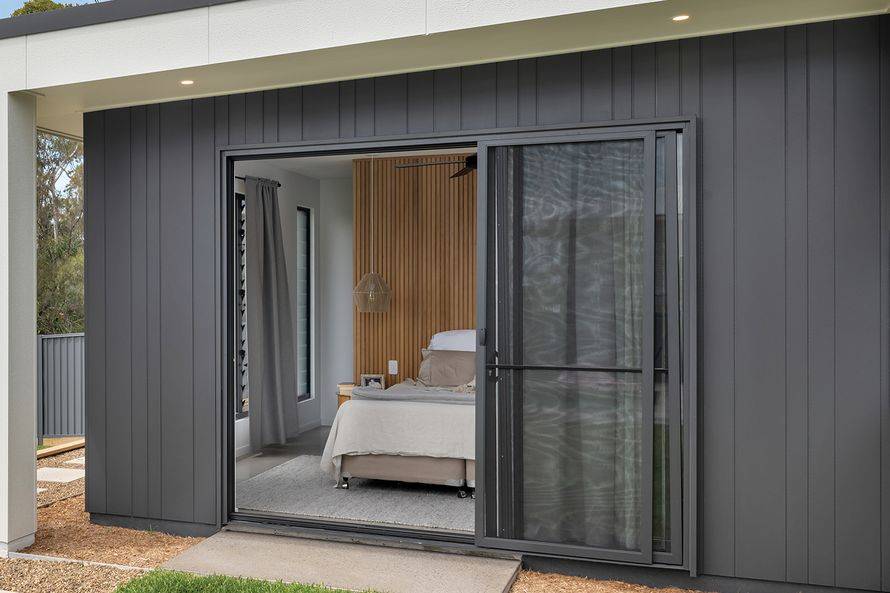
Weathergroove Fusion is a brand new, exclusively designed architectural panel that is perfect for external and internal applications. It combines the grooves from popular Weathertex profiles to create a unique style that is trendy and stylish.
Available in two finishes, Natural and Smooth, this architectural panel retains every measure of durability and safety that Weathertex is known for. This makes it the perfect solution for those looking to add a second storey to their homes.
If you are looking for a stylish and trendy solution for the cladding of your second storey addition, then look no further than Weathergroove Fusion.
Talk to our team to see how you can incorporate this into your build.
New NCC Changes – effective from 1st May 2023
Changes are coming to the National Construction Code (NCC). Starting May 1, 2023, there will be a broad range of updates to the NCC that will impact the design and construction of Second Storey Additions, Ground Floor Extension and Large Scale Renovations.
These changes are essential for ensuring that Second Storey Additions, Ground Floor Extension and Large Scale Renovations are built to the highest standards of safety, livability, and efficiency.
So, what do you need to know about the NCC changes?
The changes are being implemented in two stages, with the first stage beginning on May 1, 2023. The second stage will begin on October 1, 2023, and will include further reforms relating to livable housing, energy efficiency, and condensation management.
Some of the key changes in stage one that affect Second Storey Additions, Ground Floor Extension and Large Scale Renovations include updates to the following:
- Internal and external waterproofing
- Falls to floor wastes
- Cladding and gutters and downpipes
- Corrosion protection for steel framing
- Sanitary plumbing and drainage
- Timber framing, bracing and connections of balconies to external walls
NCC 2022 will apply to Second Storey Additions, Ground Floor Extension and Large Scale Renovations where construction approval applications are submitted from May 1, 2023, though how this applies can vary from state to state.
Builders you can trust
At 32 Degrees Building, we take great pride in our ability to deliver exceptional building solutions to our clients. We specialise in Second Storey Additions, Ground Floor Extensions, and Large Scale Renovations, and we are here to stay.
Our well-run operations and capable management team are two key reasons we have become a trusted name in the industry. We understand the importance of clear communication, attention to detail, and a commitment to excellence. Our management team comprises experienced professionals with a wealth of knowledge and expertise in the industry. They are passionate about their work and are always looking for ways to improve our processes and deliver better results to our clients.
We are also proud to be a profitable and financially stable company. Our solid financial strength means that we have the resources and stability to continue operating through tough economic times, which means that our clients can trust us to complete their projects no matter what.
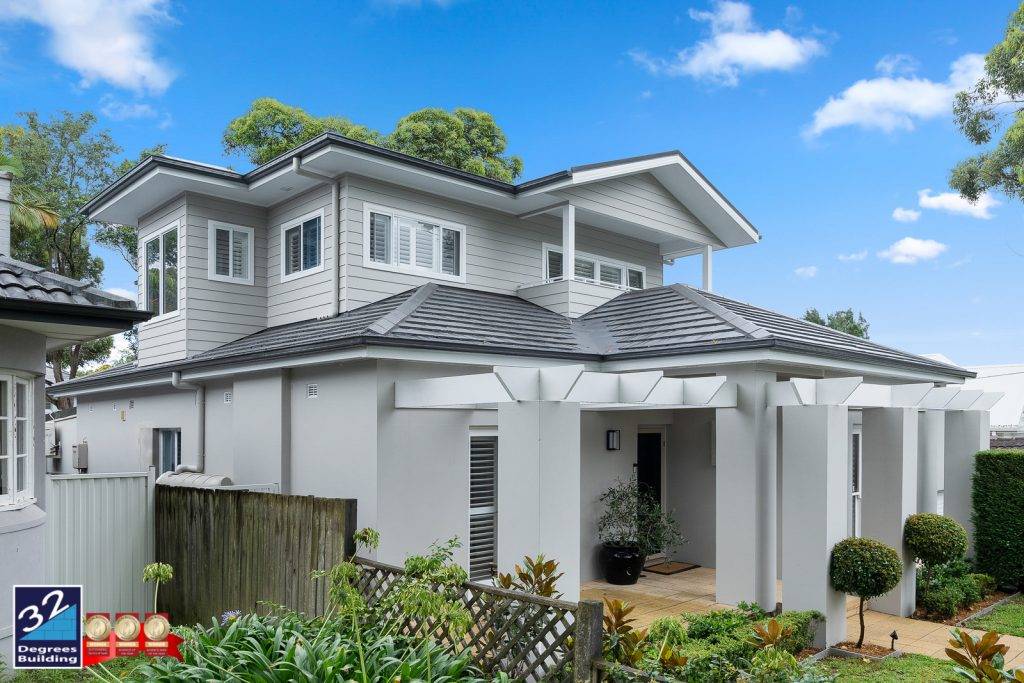
We are the experts in Second Storey Additions, Ground Floor Extensions, and Large Scale Renovations. We understand the unique challenges that these projects can present, and we have the skills and expertise to ensure that the end result is exactly what our clients envision. We are committed to delivering a stress-free and successful project from the initial consultation to the final handover.
At 32 Degrees Building, we are committed to excellence in everything we do. Our dedication to quality workmanship, attention to detail, and exceptional customer service set us apart from our competitors. Whether you want to add a second storey to your home, extend your ground floor, or undertake a large-scale renovation project, we are the team you can trust.
If you’re looking for a reliable and trusted builder for your next Second Storey Addition, Ground Floor Extension, or Large Scale Renovation project, look no further than 32 Degrees Building. Our well-run operations, capable management team, and solid financial strength make us the perfect choice for your project. Contact us today to learn more about our services and how we can help you achieve your building goals.
How do I know if my home has been built properly?
At the front of mind for the majority of homeowners entering into any building project, is the question of how to know whether the works they have started have been built with care, are within specifications and comply with the rules and regulations and have ultimately been built properly.
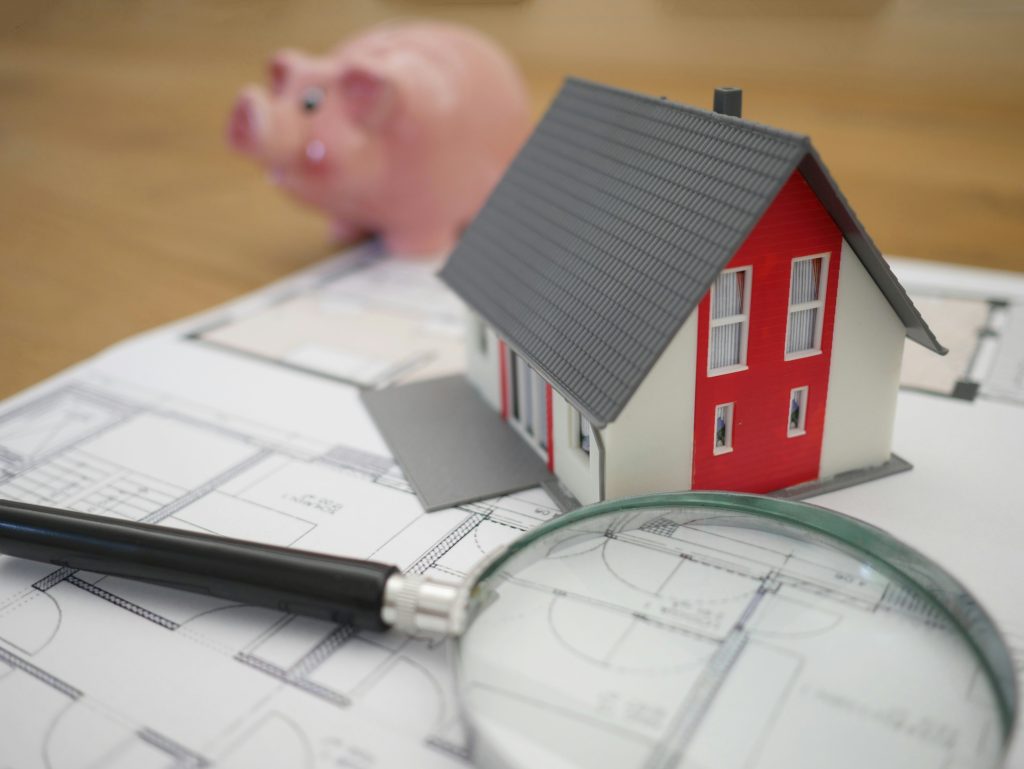
It is important to understand the process, stages, checks and requirements each build goes through and we’ve put together some information to help explain the process and the different stakeholders involved and their key role in your build;
These can be broken down as follows:
- Principal Certifying Authority (PCA);
- Engineer;
- Builder;
- Quality Assurance Program;
- Certificates;
- Defect Period.
- Statutory Warranty Period
Principal Certifying Authority (PCA)
A Principal Certifier is engaged to carry out mandatory inspections associated with a build during the construction process. They are there to ensure the structure is completed in accordance with the approved consent (DA/CC or CDC), as well as to check compliance with the Building Code of Australia (BCA) requirements
Generally for a second storey addition, the mandatory inspections that the Certifier will undertake during the build may look like this:
– After excavation for and prior to the placement of any footings
– Prior to pouring any in-situ reinforced concrete building element
– Prior to covering of the framework for any floor, wall, roof, or other building element
– Prior to covering waterproofing in any wet areas
– Prior to covering any stormwater drainage connections
– After the building work has been completed & prior to any Occupation Certificate being issued in relation to the building
Upon completion of mandatory inspections, completion of all works associated with the approval and final documents/certificates provided, an Occupation Certificate will be issued.
Engineer
A structural design plan is generally prepared by registered professional engineers, and, are based on information provided by the architectural drawings. They provide details for how a building or other structure will be built.
It is not uncommon for engineering revisions to occur during the build following onsite inspections by the engineer and consultation with the project manager. The engineer is there to confirm that the structure has been built in accordance with his plans and certifies the overall structural adequacy of the build. This certificate is provided to the Certifier.
Inspections undertaken by engineers may look like this;
– Prior to pouring any in-situ reinforced concrete building element
– Prior to covering of the framework for any floor, wall, roof, or other building element
– Prior to covering any stormwater drainage connections (if required – based upon the hydraulic design)
Builder
The role of the builder is to interpret the architectural drawings, structural drawings, surveys plan and all approved documentation and construct the building in accordance with these. The builder will then coordinate, schedule and oversee the multiple skilled trades to undertake each component of the build and then liaise and coordinate the inspections with the engineer and certifier during the build at critical stages to confirm compliance with the BCA and that the build is structurally sound.
There are multiple trades, suppliers and deliveries to be managed by your builder during a build. To name a few of the trades that would work on your home; carpenters, plasterers, concreters, brick layers, plumbers, welders, electricians, waterproofers, roofers, tilers, labourers, cabinet makers, showerscreen installers, glaziers, staircase installers, painters, flooring installers, insulation installers, asbestos removalists, air conditioning installers, renderers.
Your builder should be able to provide you with a copy of the timeline of your build but don’t be alarmed if dates change during your build with certain items – this is normal, given the multiple trades and deliveries happening! As long as your builder is within your contract period, you only need to focus on your finish date and ensuring that any materials you have to supply are onsite by the date communicated to you. Should you have any concerns with your finish date being on track, just reach out to your builder and their team for clarification. They are there to help.
Quality Assurance Program
As you can see the roles of the builder, engineer and Certifier do a lot to ensure your build is completed in compliance with the BCA and the approved plans, sometimes, it can be easy to overlook the minor items during the build and this is where our quality assurance program steps in. As an additional check across all of our builds, we arrange for an independent building inspector to complete a progress inspection at the Lock up and Rough in stage and a final inspection pre-handover.
This is an added layer of reassurance for us and our clients to ensure you are receiving the highest quality build.
Certificates
Following Practical Completion, certificates are provided to the certifier.
These are from the individual trades to certify their work has been completed in compliance with the Australian Standards.
Certificates required but not limited to:
– Engineering structural adequacy certificate
– Waterproofing certificate for each wet area
– Insulation certificate
– Glazing certificate
– Electricians CCEW certificate
– Smoke alarm certificate
– Plumbing certificate of compliance
Defect Period
Upon completion of your build and reaching Practical Completion, you will have a 13 week minor maintenance period. This is for the builder to attend to minor defects that would have been listed during your Practical Completion walkthrough but don’t prevent you from moving into your new space.
What happens when your defect period ends?
There are statutory warranties on your build.
This means that should any issue arise with the works on your home, you may reach out to your builder and make a claim; within six years for major defects and within two years for other defects from the date of completion.
By providing photos and videos to the builder, they can then investigate and determine whether it relates to the builder/contractor’s workmanship and attend to the defect for you. Industry guidance materials like the Fair Trading Standards and Tolerances guide can assist in determining a defect.
Dispute Resolution
Open communication with your builder goes a long way to easily resolving defects without the need to take legal action. Generally, if a builder and/or the owner are concerned with defects at the home, the builder may arrange an independent inspection with an engineer or building inspector, this then allows an impartial view and you can then discuss any concerns with your builder to work with you on. Alternatively, if there is a communication breakdown, either you or the Builder can formally request for Fair Trading to assist in dispute resolution and in most cases the Inspector will arrange to meet with you and the builder on-site to inspect the work under dispute and act as a mediator and issue an order of rectification if it’s required. If your builder is no longer operating, then you can submit a claim through your Home Warranty.
Ensuring Excellence with 32 Degrees Building Quality Assurance Program
At 32 Degrees Building, we are committed to delivering exceptional quality and impeccable finishes for your construction projects. Our 32 Degrees Building Quality Assurance Program is designed to ensure that your build meets the highest standards of quality and completeness so that we can provide you with the confidence that your build has been built to code.
What is the 32 Degrees Building Quality Assurance Program?
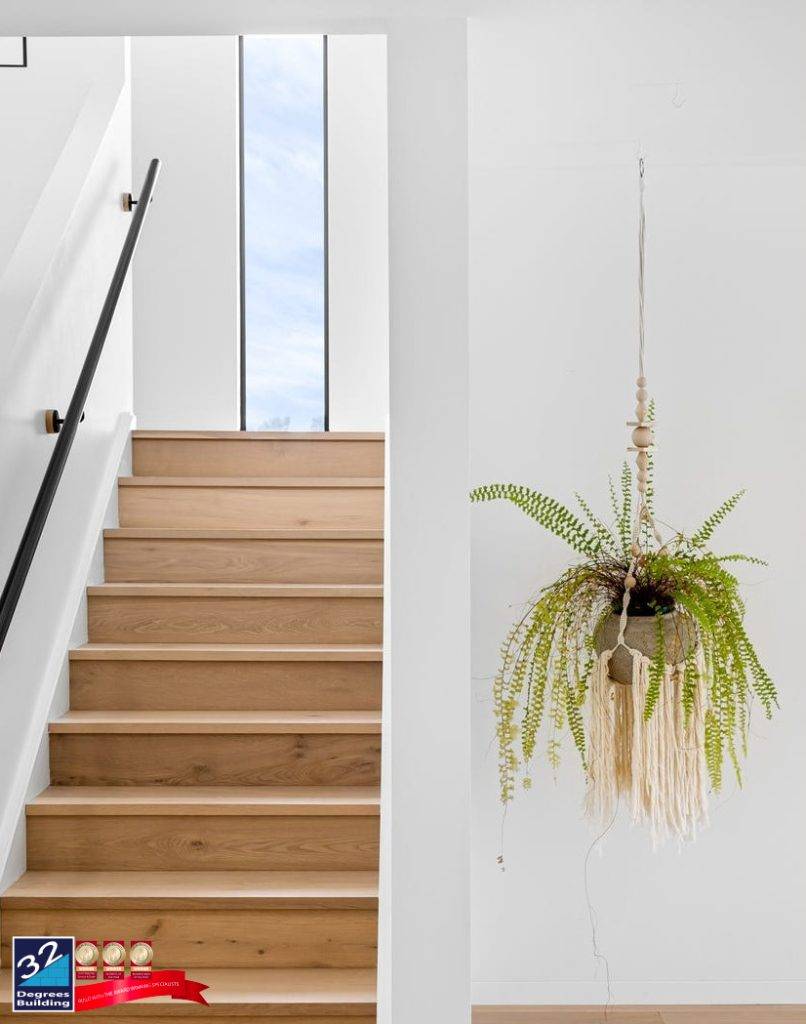
The 32 Degrees Building Quality Assurance Program is an integral part of our commitment to building excellence. This program includes a detailed progress inspection and final inspection conducted by independent building inspectors. These inspections are crucial for maintaining the highest standards throughout the construction process and ensuring that all aspects of the build are up to code and quality benchmarks.
Progress Inspection
Our progress inspection is conducted following the rough in stages of the construction process. These inspections are designed to catch any potential issues early and ensure that the build is proceeding correctly.
Key Areas of Focus:
- Frames: Inspecting the structural integrity of the frames to ensure they meet design specifications.
- Cavity Drainage & Flashings: Checking that drainage systems and flashings are properly installed to prevent moisture issues.
- Rough-In Stage: Assessing the preliminary installation of electrical, plumbing, and HVAC systems before the plasterboard is installed.
Final Inspection
The final inspection is conducted just before the handover and the sign-off of practical completion. This comprehensive inspection ensures that every aspect of your new build is finished to the highest standards.
Key Areas of Focus:
- Internal Areas: Evaluating the quality and finish of all interior spaces, including walls, ceilings, floors, and fixtures.
- External Areas: Assessing the exterior finishes, including cladding, roofing and gutters
Detailed Reporting and Certification
Both the progress and final inspections culminate in a detailed reports that may highlight any defects or areas requiring attention. These reports are crucial for ensuring that any issues are addressed promptly and that the build meets our stringent quality standards.
Certification:
Upon the successful completion of the Progress Inspection and Final Inspection, a Certificate of Quality Assurance is issued. This certificate is your assurance that all quality requirements have been met, and your new build is ready for handover in perfect condition.
Integration with Other Inspections
Our Quality Assurance Program is conducted in addition to the principal certifying authority (PCA) inspections and engineering inspections. This holistic approach ensures that your build is not only compliant with all regulatory requirements but also meets our rigorous quality benchmarks.
Conclusion
At 32 Degrees Building, our Quality Assurance Program is a testament to our dedication to delivering the highest quality builds. By incorporating thorough progress and final inspections, we ensure that every project meets our exacting standards. Trust us to provide you with a home that is not only beautiful but also built to last.
What you can do to prepare your home for a severe weather event?
Australia has recently experienced some severe weather conditions including high winds and heavy rainfall. These weather events and other similar events that have occurred in recent years, can at times be so severe that they exceed the Building Code of Australia (BCA) design benchmarks for homes constructed within Australia.
In such extreme weather conditions rainwater can be forced through closed windows and sprayed up rooves in a manner which homes aren’t designed for and therefore water may enter some homes. The resulting water ingress may cause damage to your home, often this damage may only be of a minor nature, but can still cause considerable stress to you as the homeowner.
What can you do to prepare your home for a severe weather event?
As part of your ongoing home maintenance we recommend the following check measures are undertaken to avoid any water ingress to your home;
- Check all gutters and downpipes are clear of debris, leaves etc…
- Regularly check your roof for signs of slipped roof tiles, cracks and possible water ingress entry points – especially if you have recently had a contractor attend your property eg. Foxtel or solar panel installer
- Check your stormwater drains for blockages
- Check your window and door seals aren’t displaying signs of cracks and ageing
- Check for other possible entry points and seal if required
If during a severe weather event you do get water ingress – who do you call?
- If it is an emergency please call the SES for immediate assistance
- In most other cases, do what you can to stop/reduce the incoming water and then contact your home insurer as the first step to understanding what you can do
When these severe weather events happen most owners contact the builder of the home to request an inspection or even rectification of the damaged parts however if this issue hasn’t occurred until now then it is likely it is due to the severe weather event and these items will be claimable under your owner’s home insurance or alternatively are maintenance issues as the homeowner for you to attend to.

